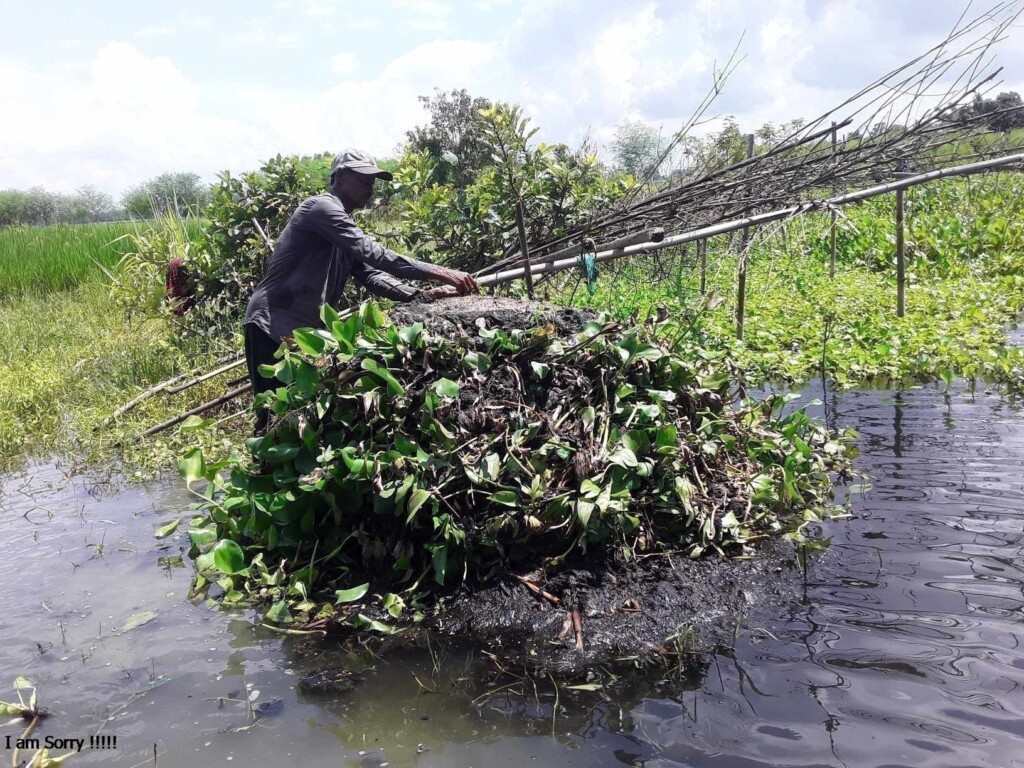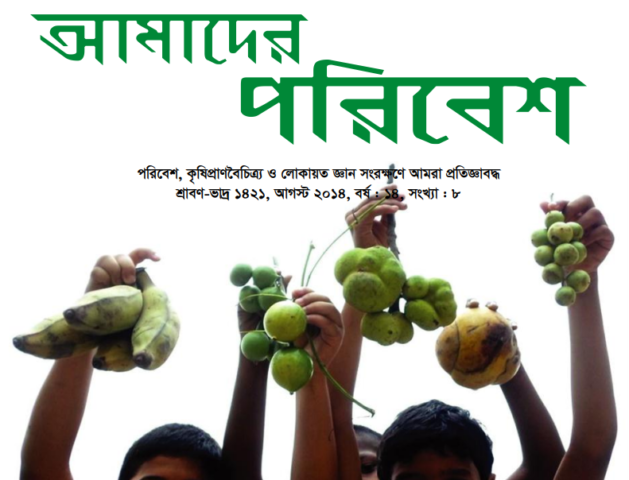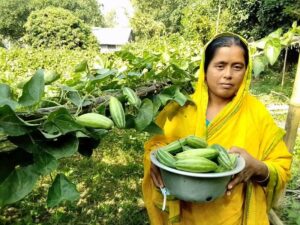By Subir Kumar Sarkar, from Ghior, Manikganj
Farmers in Manikgonj who have been living in lowland areas have observed their ancestors piling up water hyacinth in mounds during the month of Bhadra when water hyacinth is abundant. These pilling up water hyacinths at times get decomposed. Once it has decomposed, the farmers spread decomposed cow dung and soil on top and plant native seeds of bottle gourd and beans. Farmers of these low land villages (Joynagar, Helachia, Begamnagar, and Gangdubbi) of Manikgonj replicating the learning from their ancestors have been successful in cultivating vegetable, particularly bottle gourd pilling up water hyacinth during the monsoon.
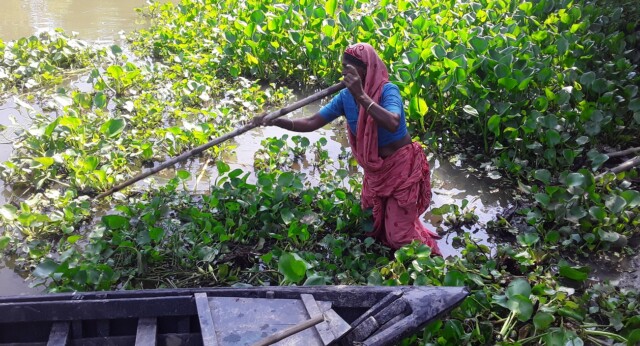
However, during the monsoon season, rivers, canals, and ponds are filled with water hyacinth. Without any cost, farmers can utilize the water hyacinth to cultivate early winter crops while the floodwater remains. According to the farmers, these water hyacinth mounds produce a significant amount of organic fertilizer and retain soil moisture, allowing the plants to grow rapidly and yield higher crops. Therefore, they do not need to apply fertilizers while cultivating vegetable. Twenty farmers from the villages of Joynagar, Helachia, Begamnagar, and Gangdubbi are practicing agroecology by cultivating on water hyacinth mounds.
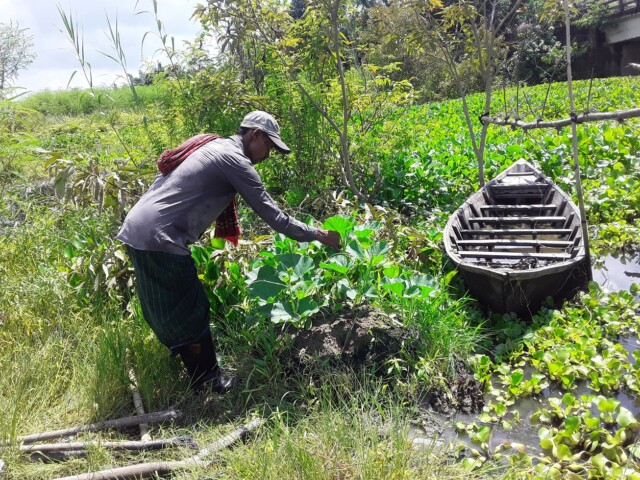
Delwara Begum, a farmer from Begamnagar village, said, “Every year, I pile up water hyacinth and plant bottle gourd vines. I use khesari bran to make the water hyacinth mound. I harvest a lot of bottle gourds adopting this method. Even I can produce vegetable during flooding situation.’ She mentioned that this method also reduces her production cost leading her to get cash selling the vegetable in the market.
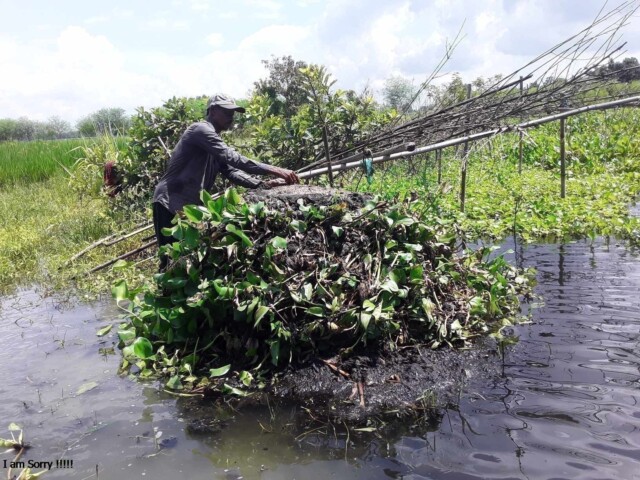
Seeing the success of the Delwara Begum and other farmers Md. Sentu Mian, the president of the Dholai Farmers’ Association, and Md. Rafiqul Islam, a young farmer from Gangdubbi village, have also piled up water hyacinth around their ponds this year to cultivate native bottle gourd and beans.

